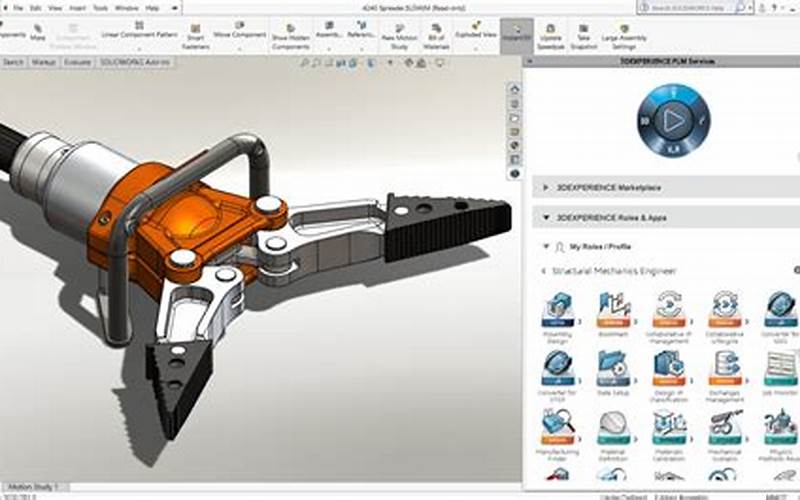Computer aided design software, commonly known as CAD software, has revolutionized the field of design, enabling designers to create detailed and accurate digital models of their ideas. With the advancement of technology, CAD software has become an essential tool in various industries, including architecture, engineering, product design, and manufacturing. This informative article explores the benefits of CAD software, its applications, and popular software options available today.
What is CAD Software?
 Source: tse1.mm.bing.net
Source: tse1.mm.bing.netCAD software is a computer-based tool used by designers to create, modify, analyze, and optimize 2D and 3D models. It allows designers to visualize their ideas in a digital format, enabling precise measurements, accurate renderings, and efficient design iterations. CAD software offers a wide range of tools and features that simplify the design process and enhance collaboration between designers, engineers, and manufacturers.
The Benefits of CAD Software
 Source: tse1.mm.bing.net
Source: tse1.mm.bing.netCAD software provides numerous benefits that have transformed the way design projects are executed. Some of the key advantages of using CAD software include:
1. Accuracy and Precision: CAD software allows for precise measurements and enables designers to create detailed models with accurate dimensions. This eliminates human error and ensures that the final product meets the desired specifications.
2. Time and Cost Savings: By automating repetitive tasks and streamlining the design process, CAD software saves time and reduces costs. It enables designers to create and modify designs efficiently, minimizing the need for manual rework and physical prototypes.
3. Visualization and Realism: CAD software offers realistic rendering capabilities, allowing designers to visualize their ideas with lifelike textures, lighting, and materials. This enables clients and stakeholders to better understand the design concept before it goes into production.
4. Collaboration and Communication: CAD software facilitates collaboration between designers, engineers, and manufacturers. It allows multiple team members to work on the same design simultaneously, improving communication and reducing errors caused by miscommunication.
5. Design Iterations and Optimization: CAD software enables designers to quickly create multiple design iterations and test different variations. This iterative design process helps optimize the design for performance, functionality, and manufacturability.
Applications of CAD Software
 Source: tse1.mm.bing.net
Source: tse1.mm.bing.netCAD software has a wide range of applications across various industries. Some of the key applications include:
1. Architecture
 Source: tse1.mm.bing.net
Source: tse1.mm.bing.netIn architecture, CAD software is used to create detailed 2D and 3D models of buildings, allowing architects to visualize the structure, layout, and aesthetics of their designs. It helps architects communicate their vision to clients and collaborate with engineers and construction teams.
2. Engineering
 Source: tse1.mm.bing.net
Source: tse1.mm.bing.netCAD software plays a crucial role in engineering, enabling engineers to design and analyze complex mechanical, electrical, and civil systems. It helps engineers optimize designs, simulate performance, and ensure compliance with safety and regulatory standards.
3. Product Design
 Source: tse1.mm.bing.net
Source: tse1.mm.bing.netIn product design, CAD software allows designers to create virtual prototypes, test functionality, and evaluate aesthetics. It helps streamline the product development process, reduce time to market, and minimize manufacturing defects.
4. Manufacturing
 Source: tse1.mm.bing.net
Source: tse1.mm.bing.netCAD software is widely used in manufacturing industries to design and optimize production processes. It helps manufacturers create efficient workflows, simulate manufacturing operations, and generate accurate instructions for machining, assembly, and quality control.
5. Automotive Design
 Source: tse1.mm.bing.net
Source: tse1.mm.bing.netIn the automotive industry, CAD software is essential for designing vehicles, components, and systems. It enables automotive designers to create aerodynamic models, perform crash simulations, and optimize fuel efficiency, safety, and performance.
Popular CAD Software Options
 Source: tse1.mm.bing.net
Source: tse1.mm.bing.netThere are several CAD software options available in the market, each with its unique features and capabilities. Some of the popular CAD software options include:
1. AutoCAD
 Source: tse1.mm.bing.net
Source: tse1.mm.bing.netAutoCAD, developed by Autodesk, is one of the most widely used CAD software in the industry. It offers a comprehensive set of tools for 2D drafting and 3D modeling, making it suitable for a wide range of design applications.
2. SolidWorks
 Source: tse1.mm.bing.net
Source: tse1.mm.bing.netSolidWorks, also developed by Autodesk, is a popular CAD software for mechanical design and engineering. It provides advanced simulation and analysis capabilities, helping engineers optimize designs for performance and manufacturability.
3. Fusion 360
 Source: tse1.mm.bing.net
Source: tse1.mm.bing.netFusion 360, developed by Autodesk, is a cloud-based CAD software that combines design, engineering, and manufacturing tools in a single platform. It allows for seamless collaboration and offers features like generative design and simulation.
4. SketchUp
 Source: tse1.mm.bing.net
Source: tse1.mm.bing.netSketchUp, developed by Trimble, is a user-friendly CAD software widely used for architectural and interior design projects. It offers intuitive 3D modeling tools and a vast library of pre-built components and textures.
5. Revit
 Source: tse1.mm.bing.net
Source: tse1.mm.bing.netRevit, also developed by Autodesk, is a Building Information Modeling (BIM) software specifically designed for architects, engineers, and construction professionals. It allows for collaborative design and provides tools for 3D modeling, visualization, and documentation.
Conclusion
CAD software has transformed the design industry, empowering designers to create accurate, realistic, and optimized digital models. Its benefits extend beyond accuracy and precision, saving time and costs while enhancing collaboration and communication. With its wide range of applications and availability of various software options, CAD software continues to shape the future of design in industries such as architecture, engineering, product design, manufacturing, and automotive design.
Post a Comment for "Computer Aided Design Software: Revolutionizing the Design Industry"